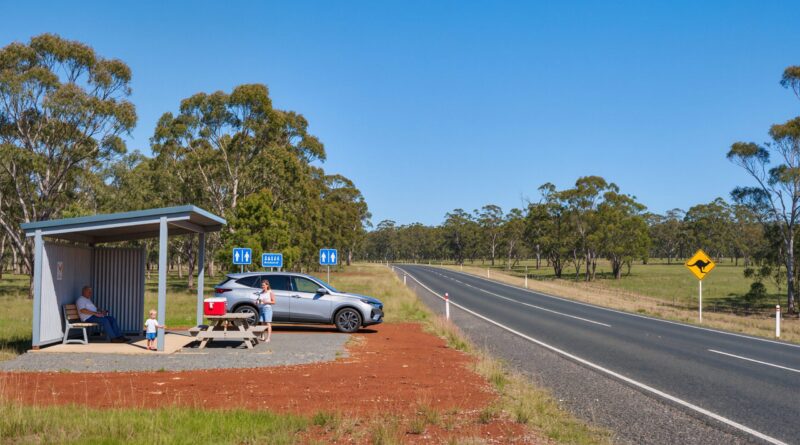
Road Safety & Breaks
Road Safety & Rest Breaks
Stay alert on long drives with simple, proven habits: rest every 2 hours, swap drivers often, and plan safe places to stop. Use our route links and Toilet Finder to line up toilets, showers, and 24/7 amenities along the way.
Routes A–Z ·
Free Camping & Rest Areas ·
Toilet Finder ·
Near Me ·
24/7 & After‑Hours ·
Public Showers
Why rest breaks matter
- Every 2 hours: Pull over for 15–20 minutes. Stretch, hydrate, use facilities, switch drivers if possible.
- Early signs of fatigue: Yawning, drifting speed, heavy eyes, missing turns. Stop immediately — coffee isn’t a cure, only rest helps.
- Night driving: Avoid dusk–dawn in wildlife regions. If you must drive, reduce speed and increase following distance.
Plan your stops
- Use Near Me to find toilets and amenities when you reach a town.
- Check 24/7 & After‑Hours options for late arrivals.
- Look for Public Showers on coastal routes and in popular parks.
- For longer breaks, see Free Camping & Rest Areas and local council campgrounds.
Route tips: common long hauls
- Hume Highway (NSW–VIC) — Plan stops at major towns (e.g., Goulburn, Albury/Wodonga, Wangaratta). Watch for fatigue on long dual‑carriageway stretches.
- Pacific Highway (NSW–QLD) — Coastal towns offer amenities blocks and showers. Holiday peak = heavier traffic; allow extra time.
- Bruce Highway (QLD) — Hydrate and schedule breaks; severe storms can hit in summer. Many foreshore areas have facilities.
- Stuart Highway (SA–NT) — Extremely long legs. Fuel early, carry water, avoid night driving due to stock and wildlife.
- Eyre Highway (SA–WA) — Remote stretches; use roadhouses and 24‑hour rest areas where signed. Check winds and heat.
Driving with kids, seniors, or mobility needs
- Shorter legs: Keep segments 90–120 minutes. Build Playground/park stops into the day.
- Facilities: Use filters for Accessible Toilets and Parents’ Rooms in the app.
- Shade & seating: Prefer stops with shade, seating, and level paths.
Wildlife, weather, and road conditions
- Wildlife times: Dusk and dawn have the highest animal activity. Slow down and scan road edges.
- Heat & dehydration: Carry extra water; use vehicle climate wisely. Take more frequent breaks in hot conditions.
- Rain, wind, dust: Increase stopping distance and reduce speed. Check local road reports and park alerts before you set out.
Safe stop types
- Highway rest areas: For short breaks and fatigue management; some allow overnight parking (read signs).
- Town amenities blocks: Toilets, sometimes showers and parents’ rooms; usually better lighting and access.
- Visitor centres & parks: Good for longer breaks, information, and shaded seating.
Quick checklist
- Break every 2 hours, 15–20 minutes
- Swap drivers often; don’t push through fatigue
- Hydrate, snack light; avoid heavy meals while driving
- Plan 24/7 options if arriving late
- Avoid dusk–dawn in wildlife regions
Use the app
Open the AussieLoo app and save likely stops along your route. Toggle filters for Accessible Toilets, Parents’ Rooms, Showers, and 24/7.
FAQs
How often should I stop on a 10–12 hour drive?
Plan a minimum of 4–5 rest breaks (every ~2 hours), plus at least one longer meal stop. If possible, split the trip over two days.
Is a power nap enough to beat fatigue?
Short naps (15–20 minutes) help, but only alongside regular breaks. If you’re very tired, stop for a longer rest or end the driving day.
What’s safer: coffee or an energy drink?
Neither replaces sleep. Caffeine can provide a short boost, but plan proper breaks and swap drivers where possible.
Where can I find late‑night toilets on long routes?
Use the 24/7 & After‑Hours filter to find 24‑hour amenities blocks and service centres on your route.